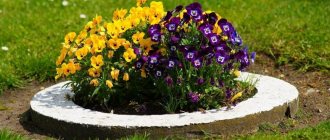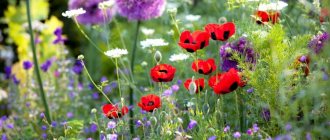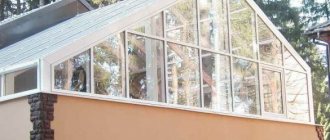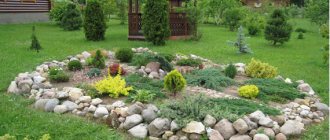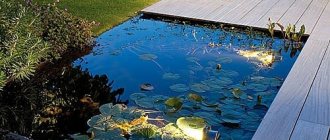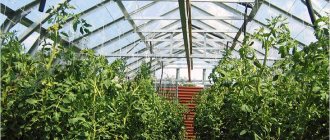Climbing plants for the garden can perform different functions. They can block out street noise, hide an ugly wall, or disguise a dried tree. Fences and fences, gazebos, arches also look especially good when they are decorated with vines.
We'll tell you what plants can be grown in dachas and garden plots in Central Russia and the South. We will provide colorful photographs for each species, with the help of which you can evaluate the decorative properties of vines.
Climbing roses for the garden
Climbing roses are considered the most beautiful plants, most of which are also easy to care for. You don’t need any special skills to grow, you just need to perform the usual manipulations - watering, loosening the soil, removing damaged stems. Climbing roses grow on almost any soil and tolerate both open sunlight and shaded areas.
To grow this type of rose, you need to make a special trellis: the shoots do not know how to cling to rough surfaces on their own. Fertilizers for flowering plants need to be applied periodically. To stimulate flowering, part of the shoots must be set in a horizontal direction.
If you wish, you can choose roses that bloom almost the entire season: from late spring until frost.
Clematis - a lush flowering vine
Clematis are loved by gardeners in different regions. A powerful, strongly weaving vine at the moment of flowering turns into a bright plant. In some varieties, the inflorescences can reach the size of a tea saucer and completely cover the green mass. This feature allows you to use clematis to decorate gray walls and create picturesque hedges.
The plant clings to the support on its own, with leaves and petioles. A trellis of twigs up to 3 cm thick is built for it. If the diameter is larger, the clematis will have to be tied, which can lead to damage to the shoots.
You can combine several types of clematis on one trellis, creating a variegated climbing covering.
Shade-loving loaches
Not all summer residents have areas completely flooded with sun. There are places in the shade that you also want to decorate with beautiful flowers.
Aristolochia (kirkazon)
A plant with large leaves and original flowers looks very beautiful when it entwines coniferous trees. Against the background of dark spruce trees, Aristolochia stands out unusually beautifully.
If the hedge is made of coniferous trees, then in some places a solid coniferous wall can be diluted with aristolochia.
Prince
Prince is a close relative of clematis, but is not at all demanding of care. The flower is interesting because it blooms very early. Its large white, blue or purple flowers will decorate any support.
It quickly entwines the wall with jagged edges of leaves and rises up, creating a very beautiful picture.
Wisteria - a plant for warm climates
Most varieties of wisteria are not adapted to the harsh Russian conditions and can only be grown in the South. However, there are exceptions: breeders periodically develop new varieties that are resistant to frost.
Wisteria is a vine with a woody trunk, individual vines of which can reach up to 15 cm in diameter. The length of the shoots can be up to 20 m, which requires either solid support or systematic pruning. Wisteria inflorescences are large, formed in the form of a brush up to 40 cm long, and lush. Depending on the variety, the color can be white, red, blue, purple, lilac.
Wisteria is ideal for decorating brick or stone walls, as well as for decorating strong pergolas. Strong gazebos can also be decorated with this plant, which will tightly cover the walls and create a pleasant coolness inside.
Most varieties of wisteria bloom from late March to late August.
Prince
Prince is a perennial vine, a close relative of the famous and popular clematis. It is also called wild hop or bindweed. Famous for its abundant flowering. Very whimsical to weather conditions. Cold and damp are destructive for him; he loves hot weather and direct sunlight. Water rarely, spray the foliage, but not excessively. Grows quickly, blooms until late autumn.
The prince differs from clematis in the structure of its flowers. The wooden vine is attached to the surface using twisted leaf petioles. The flowers are large and solitary. Can be blue, white, red, purple, lilac. They look like bells hanging down. There are pods that ripen in August-September.
Eight species are known that are not afraid of Russian frosts:
- "Willy";
- "Pamela Jackman";
- "Lemon Dream";
- Markham's Pink;
- "Ballet Skist";
- "Tsetsil" and others.
Campsis is a fast growing plant.
A capricious, fast-growing plant, the ground part of which is a woody vine. In dachas left unattended for a long time, Kampsis is not planted - it has a powerful root system, sometimes producing shoots several meters from the mother plant. If you do not dig up the shoots in a timely manner, they can encroach on the entire dacha.
Campsis flowers are tubular, collected in clusters. Depending on the variety, the flowers can be orange, yellow, or red in different shades. The aroma of the inflorescences is strong, attracting insects. The plant feels best in sunny areas; flowering is poor in the shade.
In the conditions of Central Russia, Kampsis must be covered for the winter, otherwise the vines, unadapted to frost, will die. Systematic pruning is required to suppress the rapid growth of the vine and prevent it from spreading to fruit trees.
It is not advisable to plant Campsis near the walls of buildings: its powerful roots can destroy even a strong foundation, and aerial roots will penetrate even through brickwork.
Organization of decorative plantings
Trees and shrubs look quite good in the garden, but as they grow, they develop a lush crown. In this regard, vines have an undoubted advantage over them, and it lies in the fact that they do not require a separate place, but are content with any available support.
- In the absence of one, they simply creep along the ground and, moreover, grow very actively. They can be combined with other types of plantings, creating an organic landscape in the garden or local area.
A riot of colors in the plant surroundings of the gazebo
- Creating special supports allows you to give plants any shape. A gazebo is perfect for this, and therefore is an integral attribute of landscape design. It can only compete with: a fence, which, thanks to the vines, can be a living fence, and a trellis, which can also be installed at the entrance to the gazebo.
- This instruction will be devoted to decorative weaving plants that can be used to decorate a gazebo. When deciding which plants to plant, you must decide exactly what you would like to get as a result.
Climbing plants for a gazebo: arranging a resting place in the garden
It can be anything: a metal frame braided with vines, forming a tent; a full-fledged gazebo, the posts of which are decorated with plants. With their help, you can, for example, “drape” an unsightly fence, near which, as in the photo presented, there is a rest area. In general, you can come up with anything - the main thing is to choose the right plants.
Arrangement of the seat
Proper organization of the planting site and soil composition, vital for a particular type of vine, is the key to the activity of its growth and the beauty of the crown. First of all, the size of the planting hole should ensure comfortable development of the plant’s root system.
So:
- For small vines, this is a recess measuring 0.45 * 0.45 * 0.5 m, and for large ones it should be almost twice as large. Sand or gravel should be placed at the bottom - expanded clay, or even broken brick, can be used.
Planting vines in the ground
- This is how the drainage layer is formed, and its task is to ensure the timely outflow of water. After all, despite the fact that climbing plants love moisture, they are very sensitive to its stagnation. Then you need to fill the hole with compost (humus) and add a soil improver.
- This is the name of mulch, which protects the fertile soil layer from overcompaction, cracking and weed germination. Before planting, the recess must be spilled with water, allowing it to soak in. But you should not fertilize the soil during planting, since mineral substances do not contribute to the rapid establishment of plants.
A liana planted in a brick flowerpot
By the way, a beautiful climbing plant can be planted even when there is no open ground around the gazebo. Only then do you need to provide something in the form of a flowerpot that can be made of brick or stone. You can see what it looks like in the picture above, given as an example.
Honeysuckle is a magnificent climbing shrub
Most varieties of honeysuckle have shoots up to 8 cm high, which is enough to decorate walls, fences, and a number of garden structures. Honeysuckle foliage is green on top and slightly blue on the underside. The flowers are white, red or yellow. They are relatively small, collected in inflorescences, formed at the end of the shoots. Subsequently, edible fruits are formed here.
Honeysuckle is an unpretentious plant that tolerates partial shade and even shade. However, in sunny areas, flowering is more abundant and the berries are tastier. The plant does not tolerate transplantation well, so it is better to immediately plant it in a permanent place.
Honeysuckle does not have aerial roots and does not form heavy long shoots, so it can be used to decorate the site without restrictions.
How to choose varieties
For a novice gardener, the best solution is to cultivate perennial plants that do not require careful care and are not picky about the conditions.
Undemanding, light-loving plants that can easily tolerate dark conditions will delight the owner of the gazebo with their flowering from mid-summer to autumn. For example, lemongrass, every year it produces climbing shoots that gradually increase in size.
Users often search for:
- Climbing plants for a fence
- Landscape design of a summer cottage plot of 10 acres
Its foliage and pleasant cream-colored flowers give off a delicious aroma. The stems resemble a grapevine. Schisandra shoots can reach a height of fifteen meters. In addition to its attractive appearance, it also boasts delicious fruits.
Also among the unpretentious crops we can distinguish Kampsis.
Maiden or wild grapes
This is an unpretentious liana-like plant with shoots up to several centimeters thick. Maiden grapes grow on any type of soil, are not afraid of frost, and can reach a length of up to 20 m. The annual growth is 3 meters.
Maiden grape has a dark green and bluish leaf color, which turns pink and purple-red in the fall. There is a lot of foliage, it creates a dense covering with excellent sound insulation. You don't need a trellis to grow this plant: it has suction cup tendrils and can cling even to smooth walls.
Wild grapes can be used to decorate any buildings and structures, including gazebos, pergolas, arches, and fences. However, it is undesirable to plant it near wooden houses and buildings: dense foliage will disrupt air circulation and the materials will begin to rot.
Shoots of wild grapes lying on the ground quickly take root. If you do not take care of the area, in a few years the plant will turn it into an impenetrable tropical jungle. Therefore, you need to regularly inspect the ground near wild grape plantings, cut off fallen shoots, and pull out rooted shoots.
Maiden grapes suppress the growth of weeds; this quality can be used in weedy areas.
Garden ivy - evergreen vine
If you want the walls of your house, buildings or fences to be green even in winter, plant ivy, also known as hedera, on your property. This is a powerful climbing vine with strong foliage.
The foliage can be green or gray, the length of the shoots depends on the variety and ranges from 1–30 m.
Options for using ivy:
- decorating columns on the terrace;
- decorating a year-round gazebo;
- planting along the walls of houses and barns.
In central Russia, ivy is insulated for the winter; in the southern regions, the plant calmly tolerates the cold.
Ivy grows on any type of soil, tolerates shade and partial shade, but suffers from a lack of moisture.
Tips and tricks for using pergolas in landscape design
Experts advise following some recommendations for using pergolas:
- It should be remembered that in winter all the flaws in the structures will be exposed, so the connection and fastening elements must be visually neat.
The choice of color is of great importance:
- brown - fits perfectly into the environment of weaving branches and flowing green foliage;
- white - will create some kind of airy illusion;
- variegated - it will simply be a bright spot against the general background of greenery.
When designing a pergola, you should take into account the strength with a margin, since the plants will grow, develop and their weight will increase. Also, the structure, braided with plants, is exposed to air currents and powerful gusts of wind.
- The closer the roof crossbars are located, the more shade you can get, but the plants will receive less light.
- When installing structures along the walls of buildings, according to the instructions, you should maintain a distance so that the plants do not trail along the walls, especially on the south side, and do not subsequently die from overheating.
A garden pergola is a fashionable, stylish and effective element in the landscape of a garden, park or plot, which, if properly arranged, can become a comfortable and cozy place to relax for the whole family.
Hops - an unpretentious plant
For most summer residents, hops growing on the site are a natural disaster. It grows quickly: within a month, shoots can reach a length of up to 5 meters. Powerful vines entangle trees, depriving them of their strength, are not afraid of frost, are insensitive to herbicides and can grow on any type of soil.
The vines are covered with thin tendrils that scratch and burn the skin. Therefore, hops are not used to decorate gazebos and fences located near garden paths. It would be appropriate to decorate the walls of outbuildings and fences.
Hops also reproduce by seeds, which can be carried by the wind throughout the area. Therefore, the cones need to be cut off.
Actinidia is a distant relative of kiwi
Actinidia can be grown as an ornamental or fruit plant, it all depends on the variety. This is a powerful vine that changes the color of the foliage from white at the beginning of the growing season to pink after flowering.
Actinidia shoots reach 7 meters in length. This is enough to make decorative pergolas, arches, and also selectively decorate the walls of a house, buildings, or gazebos.
Actinidia is unpretentious in care, but will respond positively to regular watering. The plant grows on any type of soil, tolerates partial shade, and is not afraid of frost. therefore, it can be grown in dachas in central Russia and even in Siberia.
The vine is heavy, so increased demands are placed on the strength of the support.
A unique place to watch the skies
The lack of a cozy dacha outside the city is not a reason to give up your homely paradise. It can be installed on the roof of a residential building. In megacities, this type of recreation has been practiced for several decades. Therefore, brave guys set up a pergola on the roof of the house in which they live.
A miniature gazebo made of metal rods against the backdrop of concrete slabs will seem like a real oasis of pleasure. They decorate it with hanging flowers, which exude a delicate aroma and create a light shadow.
During the daytime, in such a “tent” you can watch the clouds, and at night contemplate the majestic stars.
Chinese lemongrass - a beautiful and useful plant
The homeland of Chinese lemongrass is the Far East, but the vine also grows in the conditions of central Russia. This plant is frost-resistant, moisture-loving, and differs from other vines in its slow growth.
The length of the shoots of an adult plant reaches 4 meters. The shoots are arranged tightly, which makes it possible to use lemongrass for landscaping decorative walls and gazebos. Green foliage turns bright yellow in autumn. Ripening berries turn red.
Schisandra can be planted next to trees. He will use them as a support, but will not break branches and deprive the trees of their strength. It is also acceptable to use it for decorating the walls of buildings, gazebos, and other architectural objects of a summer cottage.
Chinese lemongrass leaves are used in folk medicine.
Highlander - a fragrant liana for the cottage and garden
There are several types of knotweed, including a perennial vine. This plant has fast-growing shoots and long flowering. In central Russia, Baljuan knotweed is planted, which has good winter hardiness.
Baljuan knotweed is distinguished by its extremely fast vine growth. During the season it can grow up to 6 meters. The plant tolerates frosts down to -20 °C. At lower temperatures, the above-ground part of the vine dies, but the roots and part of the plant under the snow remain alive. They will resume rapid growth in the spring.
The climbing knotweed does not have tendrils, suckers or aerial roots, so a trellis is needed to grow it. Without a trellis, the plant weaves horizontally; this quality is used to strengthen crumbling slopes.
Knotweed should not be planted next to trees - it will inhibit their growth and break branches.
Materials for production
Any material that can be found on your site is suitable for making a pergola. Or you can use those types that have already proven themselves to be reliable and profitable for construction.
Wooden pergolas
Light weight and ease of manufacture make wood the most successful and affordable material for construction. In addition, wooden pergolas look most organic and natural in the garden. The racks decorated with carvings will become the highlight of the entire structure. Pine, oak, and larch are suitable for construction.
Stands made of birch logs will add special chic. Whatever you choose, don't forget to treat the wood with an antiseptic.
Metal pergolas
The appearance of such arches is very interesting. Wrought iron extensions look especially elegant. The structure is installed using special equipment, which increases its cost. It is susceptible to corrosion, so it is important to maintain its appearance.
Stone and brick
Such extensions look impressive and reliable if they are built from stone and brick. They attract attention, but can only be installed in large areas.
Brick looks good if this structure continues a number of other structures in the garden made from the same brick.
Combination of materials
Often several materials are used when constructing a structure. The most common combinations are wood and stone, wood and metal.
Kirkazon (Aristolochia)
Kirkazon is a perennial vine with dense foliage and small beautiful inflorescences. The foliage falls off in winter, but throughout the season, Aristolochia will attract attention with its heart-shaped leaves.
The plant is a climbing plant and twines around the support counterclockwise. Kirkazon does not have suckers or aerial roots, so it can be planted next to the walls of the house, but only on a strong independent trellis: the vine has a lot of weight.
Kirkazon requires care only in the first years of life. Starting from the third year, no special care is needed, so you can plant the vine in your dachas. In the conditions of the middle zone, you can plant Aristolochia Manchurian; it tolerates frost well.
Kirkazon is not suitable for decorating chain-link fences: it will bend it with its weight.
More photos of landscaped gazebos
A small selection of structures entwined with various plantings and flowers. I don’t know most of the species presented, so photos will simply be presented without any comments. Just enjoy the aesthetics and get ideas for your building.
Tree pliers - a plant for open spaces
The liana received the name “tree plier” due to its parasitism on trees. The plant uses them as a support, while the branches are partially entwined and partially pierced through by a powerful vine. As a result, the tree dies. This quality can be used if unnecessary trees grow on the site that cannot be cut down and uprooted.
The tree plier reaches a length of up to 10 m, but most often the shoots do not exceed a length of 5 m. The foliage is abundant, densely located along the vine, the inflorescences are ugly, but the orange-red berries provide additional decorativeness.
Wood pliers are easy to care for, are not afraid of frost, and patiently tolerate drought. It can be planted at a distance from garden and ornamental trees, and not insulated for the winter.
Several varieties of the plant are known, the most popular being the corymbose wood pliers and the braided wood pliers.
Vineyard (ampelopsis)
Our review is completed by a plant that is similar in appearance to cultivated grapes, but has a more graceful vine and good decorative properties. In the first years, ampelopsis grows slowly, then the vine exhibits large annual growth. The inflorescences have no aesthetic value, but the leaves are beautiful.
In the conditions of the middle zone, you can grow aconitifolia vineyard. It is not afraid of shade, is unpretentious and has average winter hardiness. If you cover it for the winter like ordinary grapes, the plant will delight garden guests for a long time.
In southern latitudes, another species can be successfully grown - ampelopsis short-peduncle.
There are many climbing plants for the garden; we have talked only about the most common options. The attached photos and names will help you better understand which one is suitable for your site. Be sure to take into account the characteristics of vines and shrubs with long shoots, then there will be no problems when growing.
